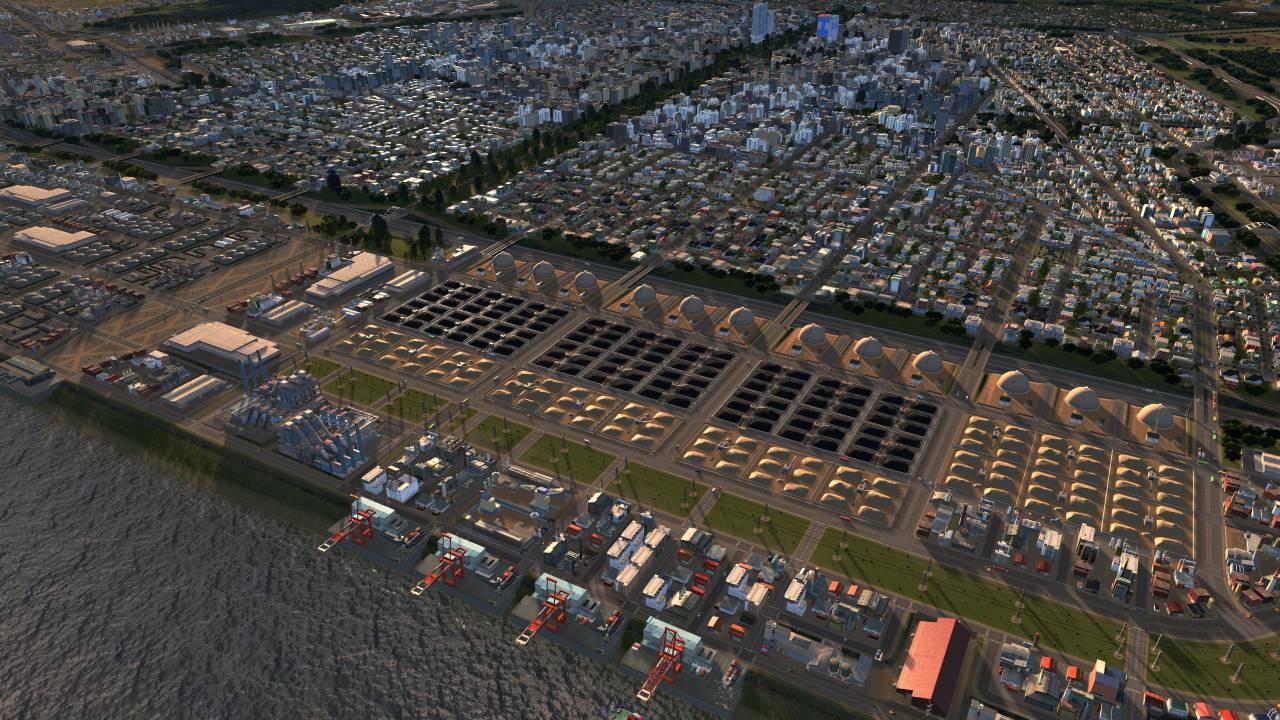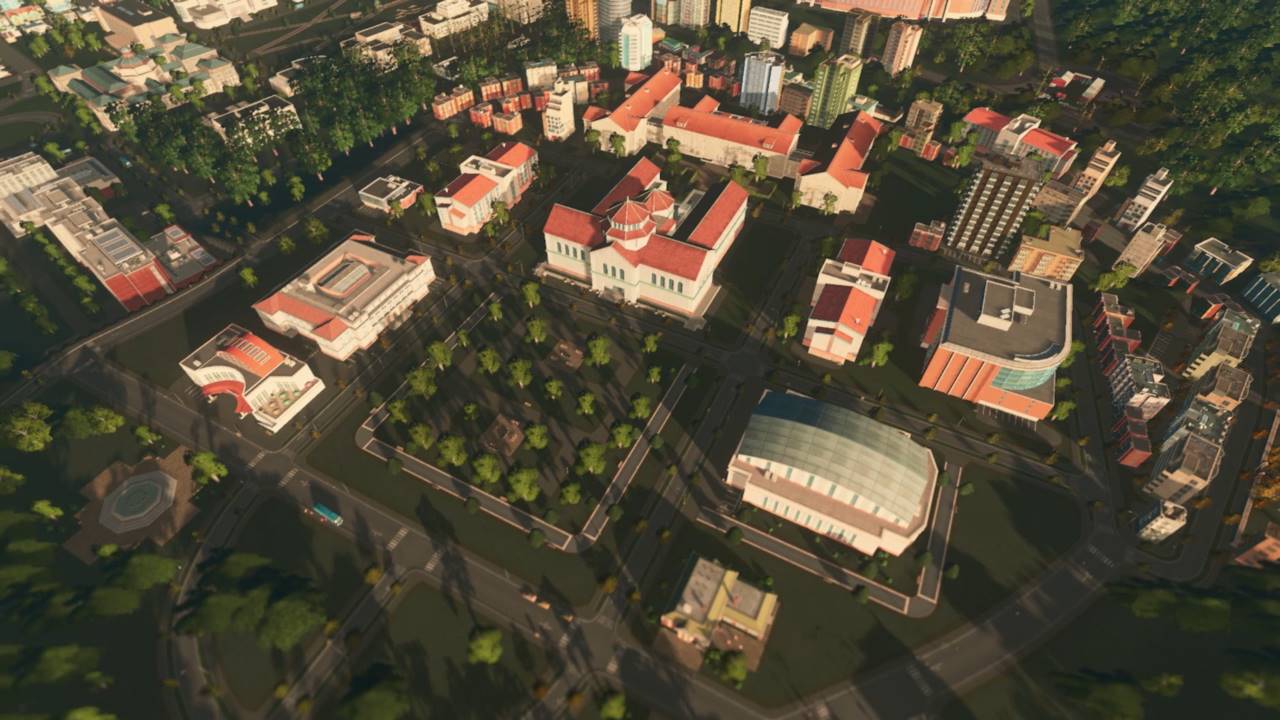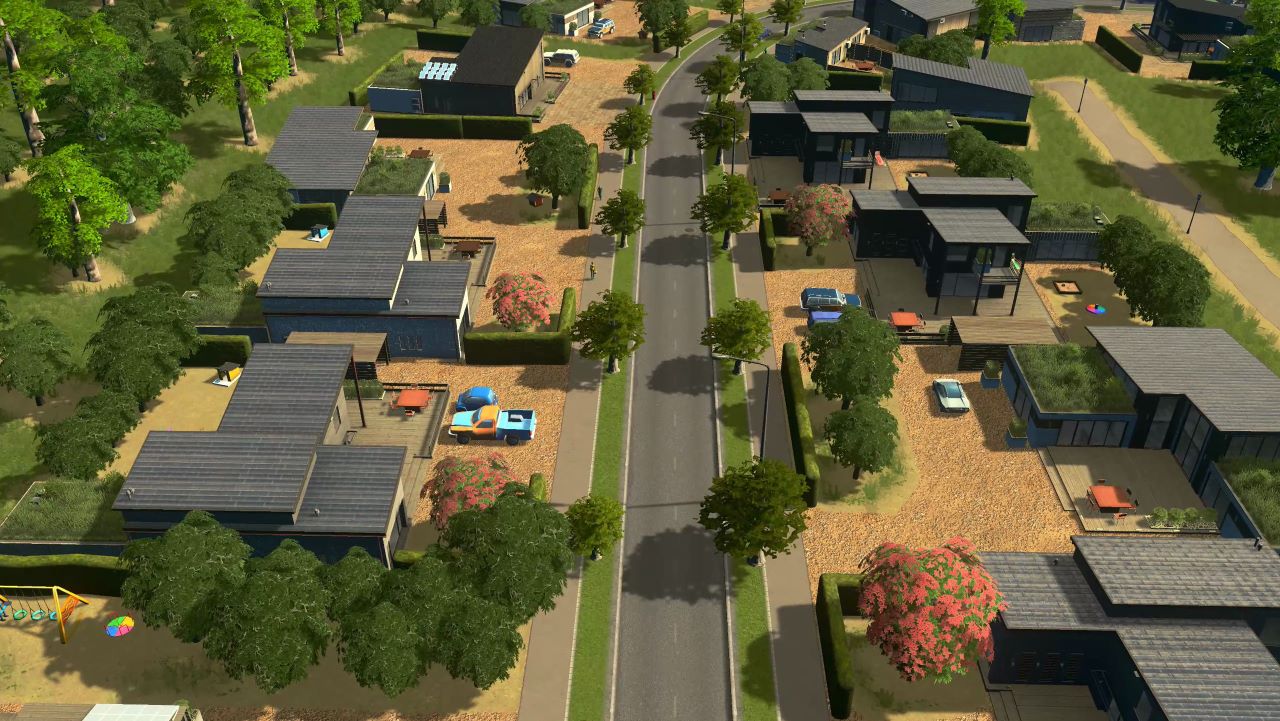Cities Skylines Guide: The best tips & tricks
In this Cities Skylines Guide 2020 you will learn:
- The best tips for traffic
- How to plan and properly supply your city
- Why neighborhoods are so important
Master all the hurdles of a city-building simulation in Cities: Skylines: from planning, to construction, to management. Cities: Skylines is available for PC, PS4 () and Xbox One (), among others.
Tips for city planning and infrastructure in Cities Skylines
At the beginning, consider where to place residential, commercial and industrial neighborhoods. Once you've created one, it's exhausting and expensive to relocate entire zones. Not to mention that residential areas take a long time to return to their original population. Having a good plan for the available construction area will save you nerves and cash later on.
In our Cities Skylines Guide 2020, we recommend a city design in which you separate the different zones. Especially the industrial zones should be quite a bit away from residential areas because of their noise and pollution.
Another tip concerns the most important element for a well-functioning city in Cities: Skylines. A well-designed infrastructure optimizes traffic and lets business and industry flourish. As soon as possible, connect commercial and industrial areas to a highway. This will prevent suppliers and customers from having to drive through your city from outside.
Tricks to get traffic under control
No other game element is as in need of optimization as traffic. This becomes most apparent when you have a large city with tens of thousands of inhabitants. Traffic jams and congestion slow down your progress and should be minimized.
The easiest way to do this is to build fewer intersections and more traffic circles. This will make the traffic "flow" better. Traffic circles are excellent as distributors to the respective zones. A good tip for large cities or conurbations is to use one-way streets.
Nothing works in Cities Skylines without a functioning infrastructure!
One-way streets make it easier for the car AI to find its way, so that traffic runs more collision-free. However, there is one downside: The service areas of the police, fire department, hospitals, etc. can suffer from the one-way streets. Therefore, make sure to build such buildings near your distribution points, so that the emergency doctor can get there quickly in any direction.
Your main roads should be large and multi-lane, while your intersections should be two-lane at most. The reason for this is that with multi-lane intersections, traffic lights are erected, which impede traffic tremendously. This does not happen with intersections with two-lane roads, which is why they are sometimes the better choice.
Use public transport and footpaths
Another tip in our Cities Skylines Guide 2020 refers to the use of public transport and crosswalks to relieve road traffic. It is best to build bus and train stations close to each other, so that travelers can quickly change trains. Build train and bus stations in population centers of your commercial and industrial areas and provide direct routes to your residential areas.
Crosswalks can be built on multiple levels, as can roads. With bridges or tunnels you offer your residents alternative routes, which will make them walk more distances. This not only contributes to an atmospheric overall picture, but also relieves the road traffic.
Cities Skylines Guide 2020: What's important for each zone
The three zones in Cities: Skylines have very different properties. For example, in industrial areas it's no problem to place landfills. In residential areas, this would reduce the price of land enormously, and residents would complain all the time.
The most important thing for your residents is peace, safety and cleanliness. They don't like noisy industry or big shopping streets. Police, fire departments and hospitals are all the more important to them. In addition, parks and public buildings, such as schools, help to raise the price of land, which means you collect more taxes.
On the subject of education(here you'll learn everything about the Campus DLC of Cities Skylines), you should know that higher degrees lead to better jobs and in turn to more tax revenue. In principle, an educated population is more rewarding, since it also produces less waste. Nevertheless, you should not have only academics in the city, because they are not interested in "simple" jobs. This would leave jobs unfilled, which hurts your economy.
Create a spacious campus area for the students.
In industrial zones, electricity, water and waste disposal are the most important features. For creating your industrial zones, another tip is to leave two to three tiles free between the roads and the construction zones so that you can upgrade to larger roads later without having to tear anything down.
Create and optimize quarters
Each game map has a different distribution of resources. Especially in the industrial zones you should look at which resource you are currently building on. In case of oil deposits, drilling rigs and oil refineries are the most logical choice. However, these dump a lot of dirt and smog into the environment, and if the wind blows unfavorably, the stuff ends up in your residential quarters.
If you have a green thumb in Cities Skylines, you'll be loved by the residents.
A forestry industry is much more environmentally friendly. Its disadvantage is that it provides fewer jobs, which means you'll earn less. In the end, you should always consider what is needed more urgently and whether your neighborhood is affected by noise and smog.
More Cities Skylines Guides & Articles
- Cities Skylines DLCs: An overview of all DLCs & expansions
- Your perfect education system with the Campus DLC of Cities Skylines
- Cities: Skylines Mods 2020 - The 13 best mods from the Steam Workshop
Visit us on Facebook and Instagram to discuss your favorite games.
